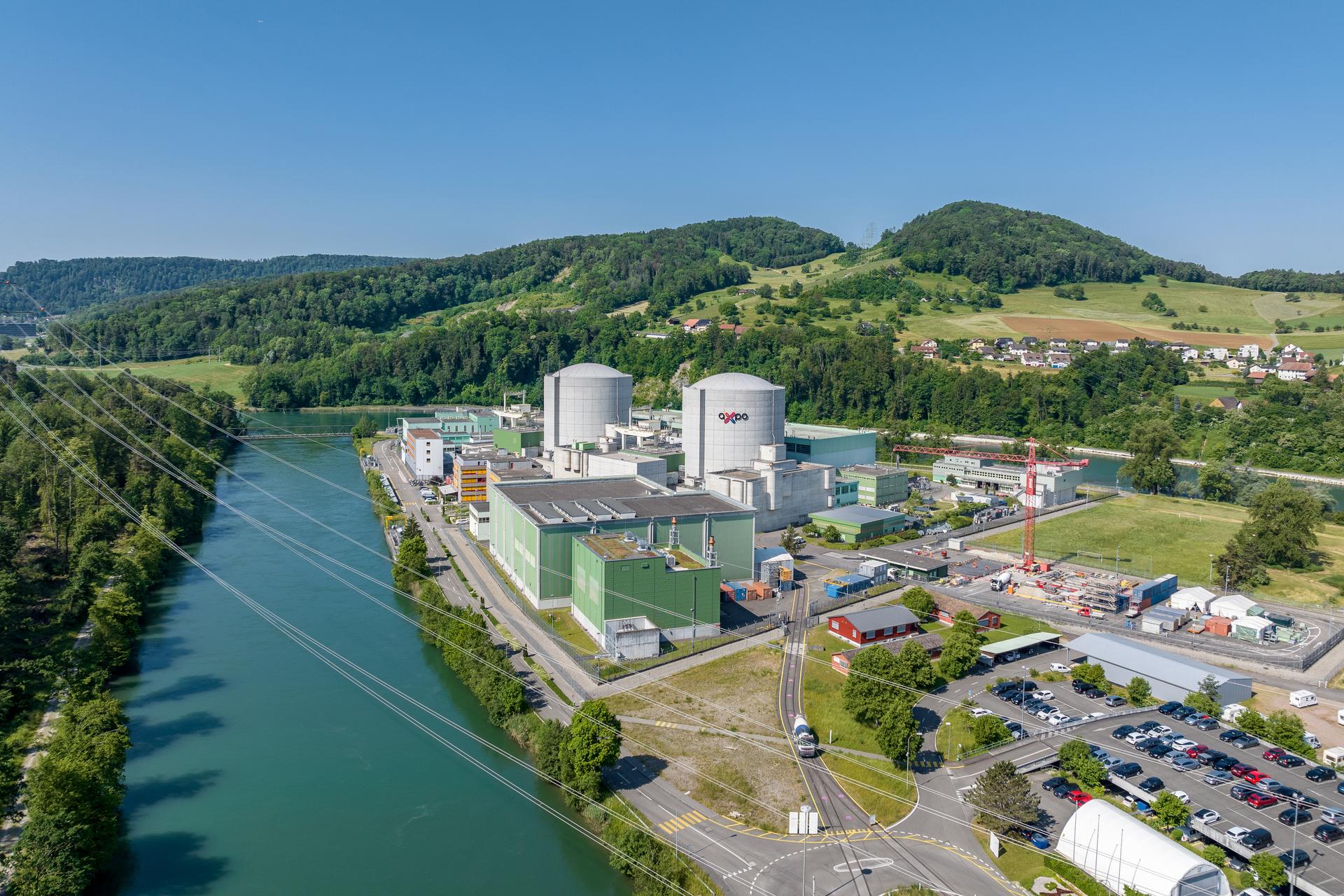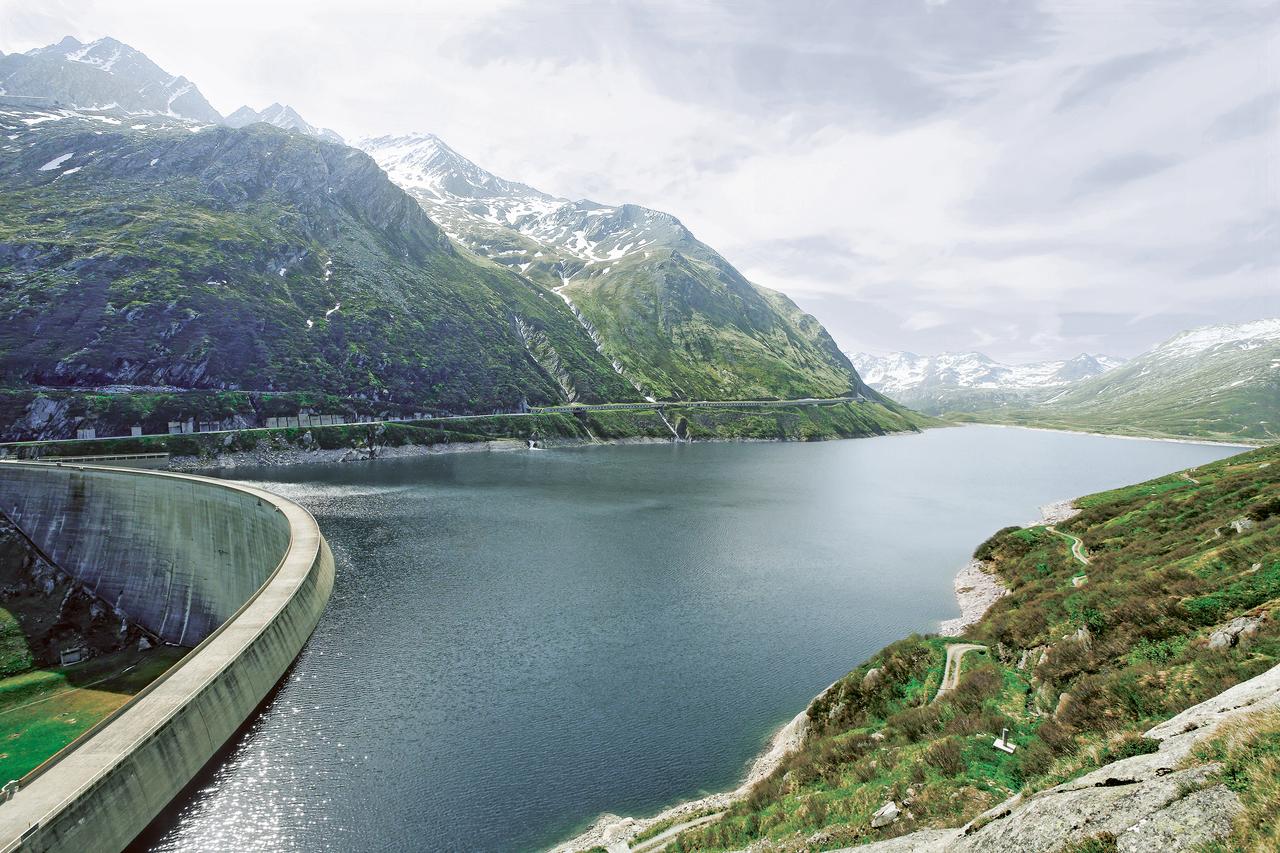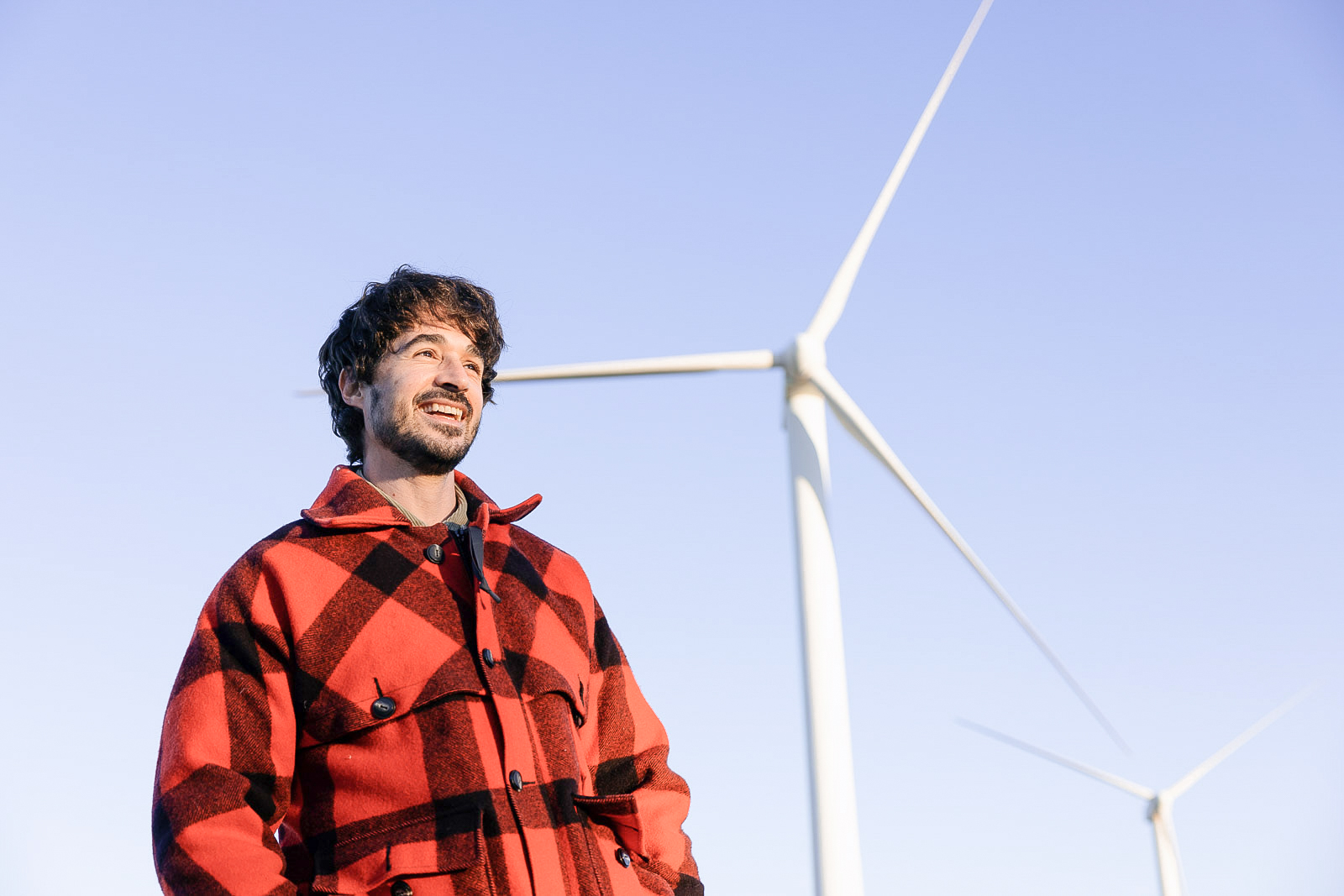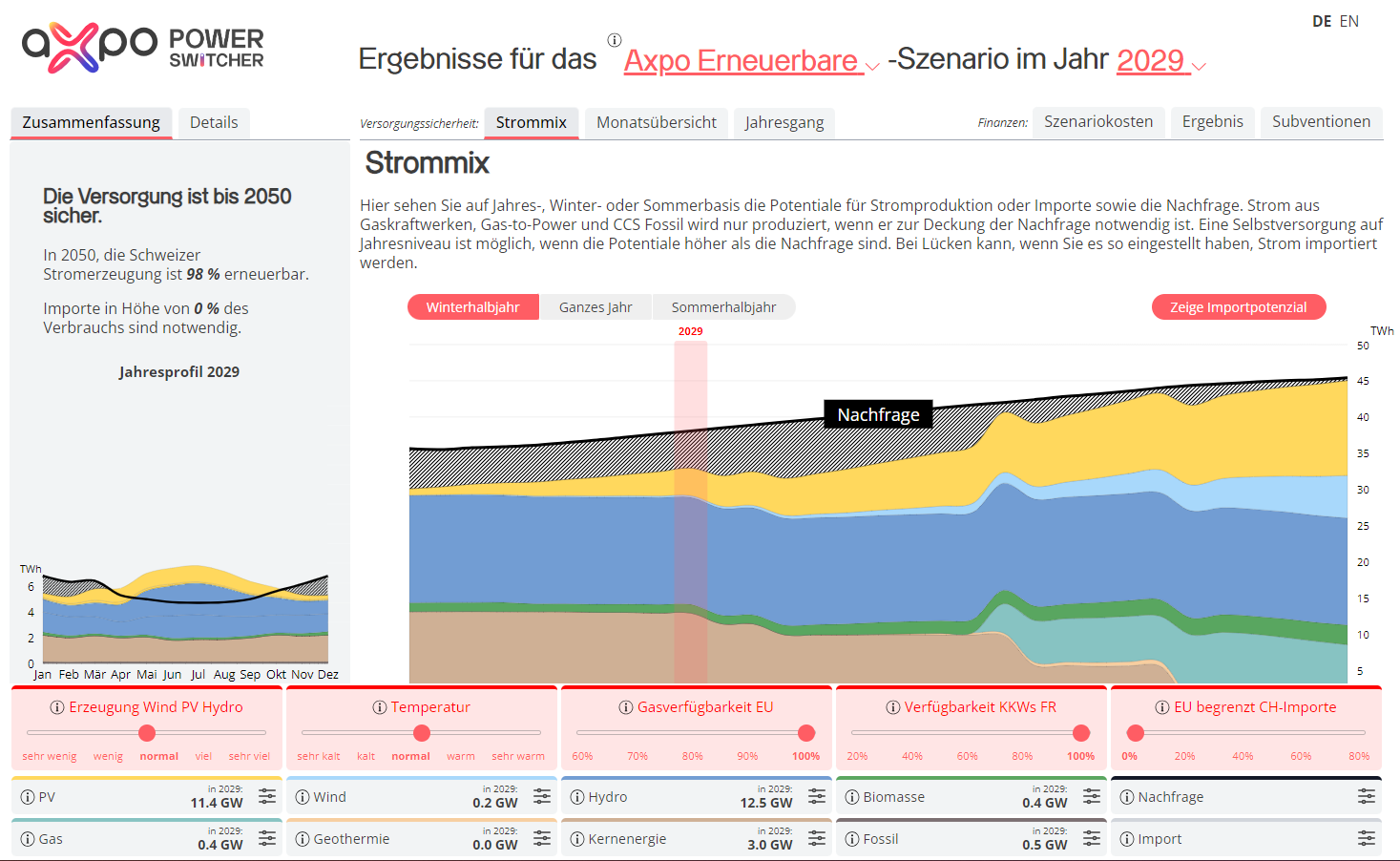

Nuclear energy Reliable, safe and environmentally friendly
With the exception of a few weeks each year, nuclear power plants produce electricity around the clock, day in, day out. Ensuring a continuous supply of essential baseload energy that is both safe and climate-friendly, nuclear power plants account for a third of Switzerland’s electricity production.
A vital source of power, especially during the winter months, Axpo maintains nearly 60 per cent of the installed production capacity of Switzerland’s nuclear power plants.
Our nuclear power plants
Axpo’s nuclear power plant portfolio includes our own Beznau facility (comprising the Beznau 1 and Beznau 2 reactors), the partially owned Leibstadt and Gösgen partner plants, and procurement rights from French nuclear power plants.
What you need to know about nuclear power plants
Nuclear power plants use the energy of nuclear fission to produce electricity. Like their coal and gas-fired counterparts, they are thermal power plants. The difference, however, is that nuclear plants don’t produce air pollutants or greenhouse gases when generating heat.
In a nuclear power plant, uranium atoms are ‘fissioned’ (split) in the reactor under controlled conditions. The energy released is used to heat water under high pressure, just like in a domestic pressure cooker. This produces hot steam, which drives a turbine connected to a generator. The generator then produces electricity, which is supplied to consumers through the power grid.
At Axpo, we have set ourselves the goal of ensuring that the nuclear facilities we manage are among the best and safest in the world. We are committed to complying with nuclear safety standards laid down by the International Atomic Energy Agency (IAEA) Safety Convention and ratified by Switzerland. Our facilities are regularly inspected by national and international authorities.
In this context, periodic safety reviews are of great importance. They form the basis for measures to maintain and improve the safe operation of nuclear plants. In addition, safety is regularly analysed and assessed by the World Association of Nuclear Operators (WANO), a global group of nuclear power plant operators dedicated to sharing nuclear safety knowledge and experience.
The safety standards of Swiss nuclear power plants are among the highest in the world. The current practice of continuous upgrading has led to a strong safety culture, which is also reflected in their low susceptibility to malfunction and the high availability by international standards of a reliable long-term electricity supply. European stress tests have also confirmed that Swiss power plants have a very high level of safety. necessarily understand the concept of high availability.
- Download Nuclear Safety Charter View Send email Download
The safety of Swiss nuclear facilities is ensured not only by their operators but also by the Federal Nuclear Safety Inspectorate ENSI. All nuclear installations are supervised by ENSI, including nuclear power plants, the Zwilag interim storage facility for radioactive waste, and the nuclear research facilities of the Paul Scherrer Institute in Villigen, EPF Lausanne and the University of Basel. As an independent institution under public law, ENSI regulates every aspect of nuclear energy, from project planning and operation to plant decommissioning and the disposal of radioactive waste. This also includes protecting personnel and the public from radiation and nuclear facilities from sabotage and terrorism.
You can find out more about earthquake safety, radiation protection and the liability legal responsibilities of nuclear power plants on the industry organisation website swissnuclear.
Under Swiss legislation, a nuclear power plant can remain in operation for as long as it meets legal safety requirements. No run-time limit is imposed.
The operation of a nuclear power plant depends on technical conditions, as well as regulatory and economic factors. Axpo plans to continue operating power plants for as long as they are safe and economical.
Furthermore, nuclear energy continues to make an important contribution to Switzerland’s security of supply. As a bridging technology, it gives us the time needed to implement the planned transition of Switzerland’s electricity supply system to more renewable energies.
Operators are also responsible for the decommissioning of nuclear power plants and the disposal of radioactive waste. This is why the costs associated with the operation, post-operation, dismantling and disposal of radioactive waste are included in the price of electricity, according to the ‘polluter-pays’ principle. Over an operating period of 50 years, these costs amount to around one Swiss centime per kilowatt hour.
The disposal costs incurred during the operation of the power plant are paid by the operators on an ongoing basis. These costs include transport and interim storage, associated waste containers, and the preparation of radioactive waste for subsequent storage in deep geological repositories. Throughout the operating period, the operators also pay into two funds supervised by the Swiss government. In addition to the return on fund assets, these contributions cover the total costs associated with decommissioning and waste disposal. This ensures that the necessary funds are available for the decommissioning and disposal costs that arise after shutdown.
Cost studies
Under Swiss government supervision, expected future costs are estimated every five years in studies based on current state-of-the-art science and technology. These studies form the basis for determining contributions to the fund by the nuclear power plant operators and for any provisions that the operators have to make. The cost studies are reviewed by the federal supervisory authority and independent experts. The aim is to ensure consistent application of the precautionary and ‘polluter-pays’ principles so that the federal government and future generations are not faced with any uncovered costs.
Waste
During its operation, a nuclear power plant generates various types of waste. The highly radioactive spent fuel elements account for only a fraction of this. After removal from the reactor, they are first stored in decay basins located at the nuclear power plant. After five to ten years, they are then transported to the plant’s own interim storage facility or the Zwilag central interim storage facility in Würenlingen. The low and medium-level radioactive waste generated by the operation of a nuclear power plant is around nine times greater than the volume of high-level radioactive waste.
The Mühleberg nuclear power plant, which belongs to the BKW Group, is the first Swiss nuclear power plant to be decommissioned. The decommissioning and dismantling work started in 2019 and is expected to be completed in 2034.
This is a complex and challenging process which, just like the operation of a nuclear power plant itself, is monitored at every step by the ENSI safety inspectorate.
You can read about the progress of the Mühleberg decommissioning on the BKW website.
Details of how the Beznau nuclear power plant deals with decommissioning and dismantling can be found here:
- Decommissioning, dismantling and disposal of the Beznau nuclear power plant (only in German) View Send email Download









